The Secret Commonwealth, BN SciFi, and a Gift Guide!
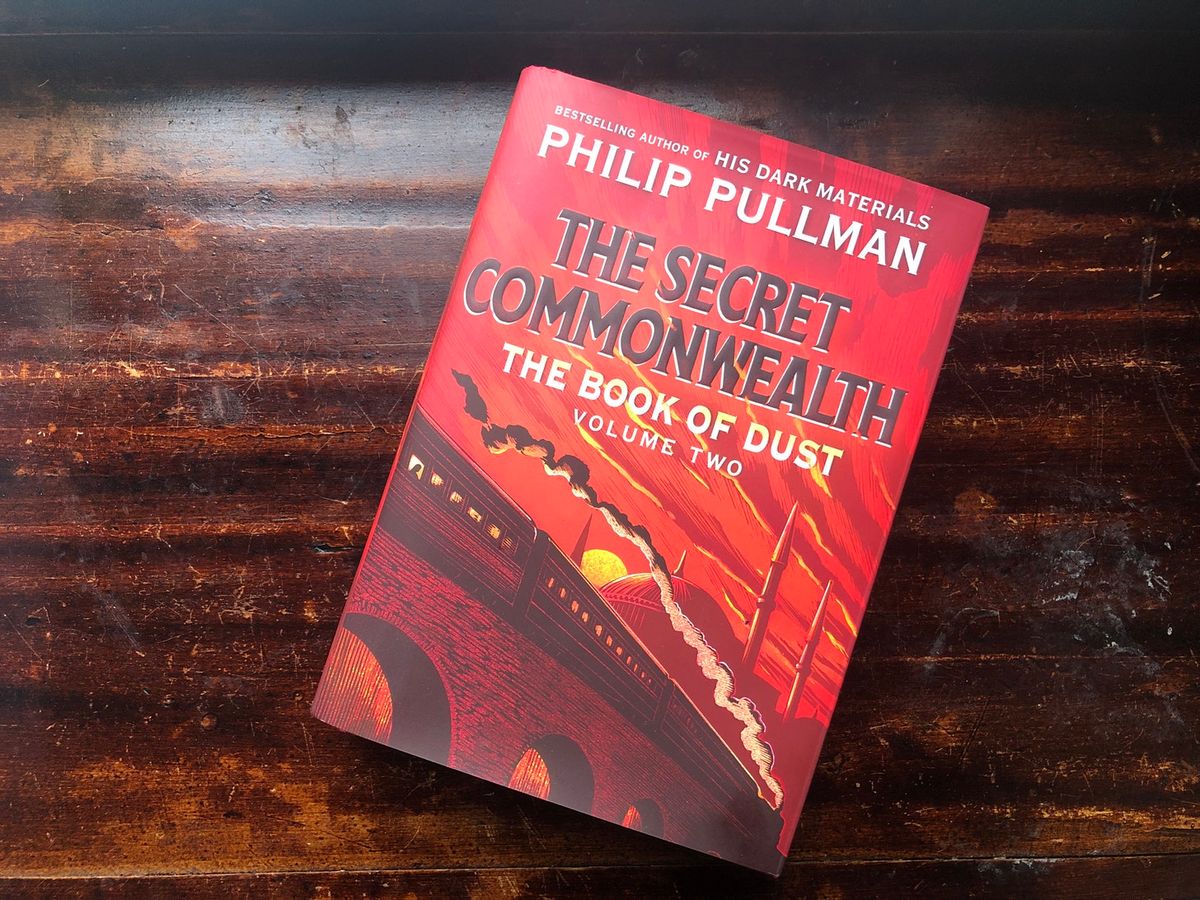
Hello!
This letter is a bit overdue. I’ve been tied up with a bunch of baby, book, teaching, and other things the last couple of weeks. Let’s dive in.
Book of Dust: The Secret Commonwealth
For years now, author Philip Pullman worked on a successor to his His Dark Materials series, which he called The Book of Dust. One book became three, and in November 2017, La Belle Sauvage, the first installment of this quasi-trilogy hit bookstores. I found it to be an interesting, but conflicting trip back to the world, and my feelings on it have hardened a bit: Pullman’s depiction and use of sexual assault against one character was … problematic, and while I’ve been excited for this new installment, I’ve also been a bit wary.
Unlike La Belle Sauvage, which was set prior to the events of His Dark Materials, The Secret Commonwealth is set a decade or so after. Lyra and her dæmon Pantalaimon have become estranged in recent years — they argue and quarrel. As dæmons are a sort of manifestation of one’s soul, it’s a sign that she’s dealing with some issues of her own — she doesn’t like the person that she’s become. Part of that is due to the trials that she went through in The Amber Spyglass, where she had to separate from Pantalaimon, and it’s something that neither have been able to forgive one another for. She’s also begun reading deeper into a new philosophical movement that advocates for reason above all else, with things like dæmons and the fantastic in her world an aberration.
When The Secret Commonwealth kicks off, Pantalaimon sees a brutal attack and murder, and he’s handed off a secret: the tyrannical Magisterium is after something that puts Lyra squarely in their path once again, and they seem to be after a special type of rose from deep in the Middle East, in a place where daemons can’t go. Pantalaimon disappears and goes off on a journey of his own, to find Lyra’s missing imagination, and Lyra sets off to try and find him.
There’s a lot to unpack from this book, but a couple of things stood out to me. His Dark Materials was a powerful work of anti-authoritarian fantasy, in which Pullman pushes back against the rise of right-wing totalitarianism, in the form of religious orthodoxy. With this novel (and La Belle Sauvage), he’s once again exploring those themes. They seem to have more relevance than ever in 2019 — just look at the political environment of Europe and the rest of the world. The Magisterium, the organization that rules Lyra’s world, is more powerful than ever, and it’s seeking to clamp down on the means through which people can poke through its arguments and lies. Over the course of the novel, Pullman charts a change within the organization and a powerful figure within that coalesces power, and attacks by religious fundamentalists that seem to be carrying out a terror campaign covertly in its name.
While this is happening, Pullman explores a deeper element of this style of totalitarianism: one that lives in the mind, and which seems to have infected Lyra and others. Lyra’s determination to try and find some new worldview has alienated her from herself, and the desire to find some sort of reconciliation. At its heart, the book is about the importance of creativity and imagination, rather than rigid fundamentalism. Pullman portrays this mindset as a sort of illness: as Lyra tracks down the lead author whom she’s been following, she discovers that he’s reclusive, and abusive towards his own dæmons, believing it to be a figment of his own imagination.
The story works, mostly. It’s a bit sprawling across several story threads, and it took me a lot longer to get through than I expected. Pullman also didn’t really learn from the response to La Belle Sauvage — Lyra is attacked in a particularly brutal way, and it’s something that could be avoided. Secret Commonwealth also feels somewhat disconnected from La Belle Sauvage — it’s less like a trilogy and more like a prequel and sequel duology.
Still, it’s a powerful work, one that ends on a considerable cliffhanger, one that has me hoping that the final installment will be in hand before too much longer.
B&N Sci-Fi and Fantasy Blog
Some bad news from last week: Barnes & Noble has made some sort of strategic shift, and has decided that they’re going to no longer hire contract writers to provide content for their blogs, including the Barnes & Noble Sci-Fi and Fantasy Blog. It’s a bummer, and a real bump in the road for me personally, because I could reliably place pieces there. While it didn’t make up a significant part of my income as a freelancer, it’s money that’s no longer coming in.
I wrote about this a bit on Twitter after word broke from other writers — Joel Cunningham, the site’s managing editor, was fantastic from when I started back in 2015, providing me with a really great outlet to write some fantastic things over the years. Some of those pieces included appreciations of off-the-beaten path science fiction and fantasy novels, like Michael A. Stackpole’s DragonCrown Cycle and Karen Traviss’s Wes’har Wars series, or reviews of titles such as Elizabeth Bonesteel’s The Cold Between and Neil Gaiman’s View from the Cheap Seats.
But most importantly, Joel was interested in long-form stuff. I got to write about the long history of Chinese SF, a five-part series that delved into the history of the Star Wars Expanded Universe, and most importantly, a deep-dive into the history of The Expanse, right as the TV show was launching on Syfy. I got to visit the set, interview a ton of people involved in the production, and write a piece that I’m still very proud of. I still get email from people asking if I’ll do another one. (Maybe?) It’s frustrating to not have that outlet any longer.
But I also get B&N’s position here: it’s been slammed hard by Amazon, it’s involved in some issues with its former CEO and it’s drifted a bit from its core mission: bookselling.
I worked at Borders before it went out, and there was more than a little commentary about how the focus on bookselling had been diluted with other add-ons: candy, toys, etc. Not long ago, I posted an article from Me Magazine called “How Reading Became a Lifestyle Brand” in which Amy Stephenson spoke about how it’s hard for bookstores to only sell books, but that a number of indie bookstores have turned to book-adjacent accessories, like bags, cloths, and the like.
I think B&N needs to double down its focus on the strengths of a bookstore: knowledgeable booksellers, and products that customers want. Unfortunately, that also means that there’ll be trimming. A large body of freelance writers is an easy thing to cut. If the metrics on the expense of said writers isn’t matching the income they generate, then that’s a pretty easy thing to cut down. Publishers Weekly has a short, good piece about it.
Still, it’s a shame: Joel had a good sense of what to commission for commentary, reviews, and longer pieces, and I think that these pieces do add to the larger genre conversation. But still, they’re losing a lot of good writers, like Aidan Moher, Meghan Ball, Ross Johnson, Paul Weimer, and others. A couple of pieces that I had killed that were in the works will end up in other places, or here on this newsletter. There aren’t a ton of places for good SF/F commentary these days.
2019 Gift Guide!
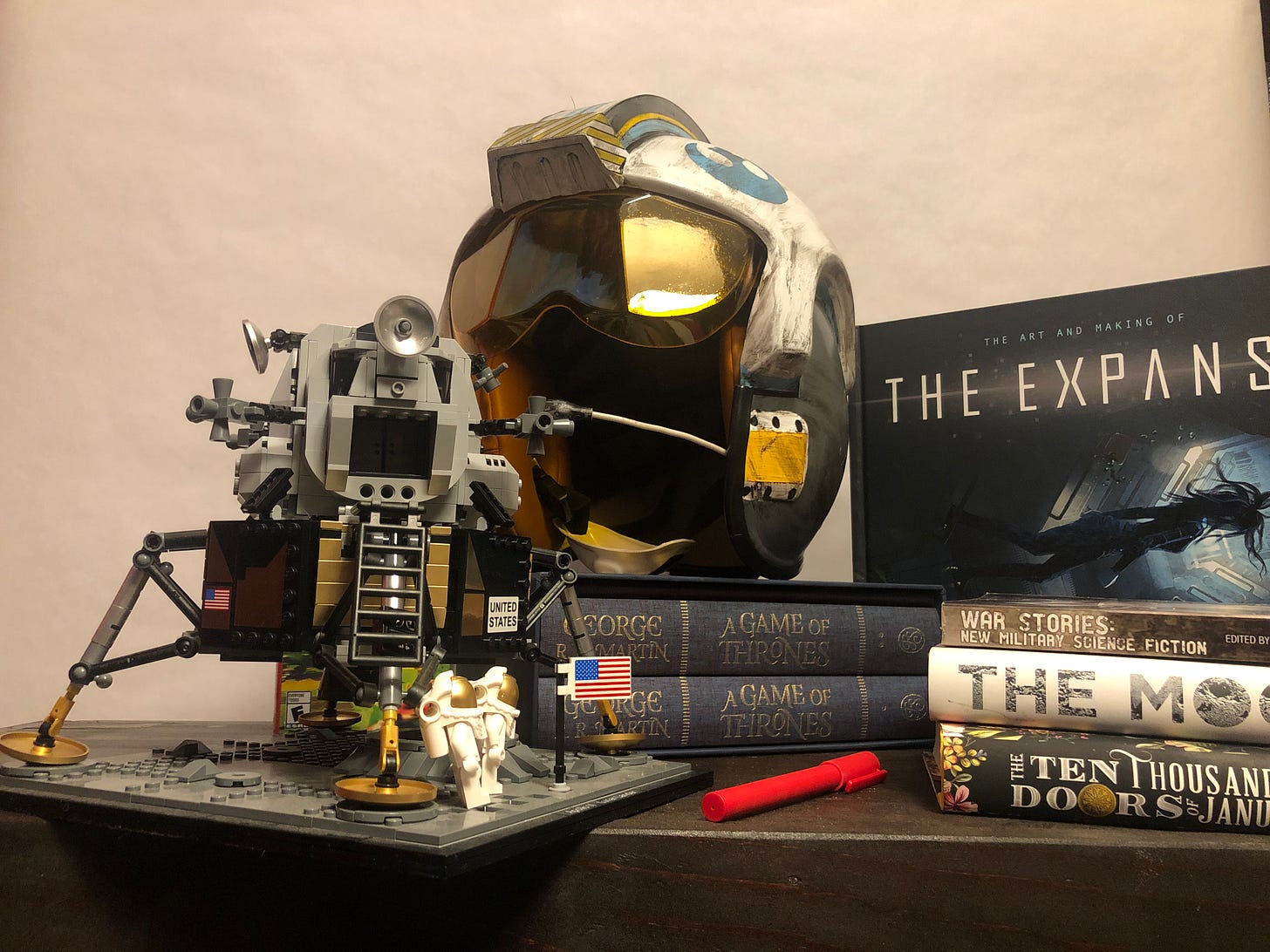
The holidays are approaching (Black Friday in particular), and people are going to be looking for things to buy their friends and family (or yourself!). While I was at The Verge, I always had fun taking part in that, so I figured I’d do up my own version.
The Art and Making of The Expanse — $40
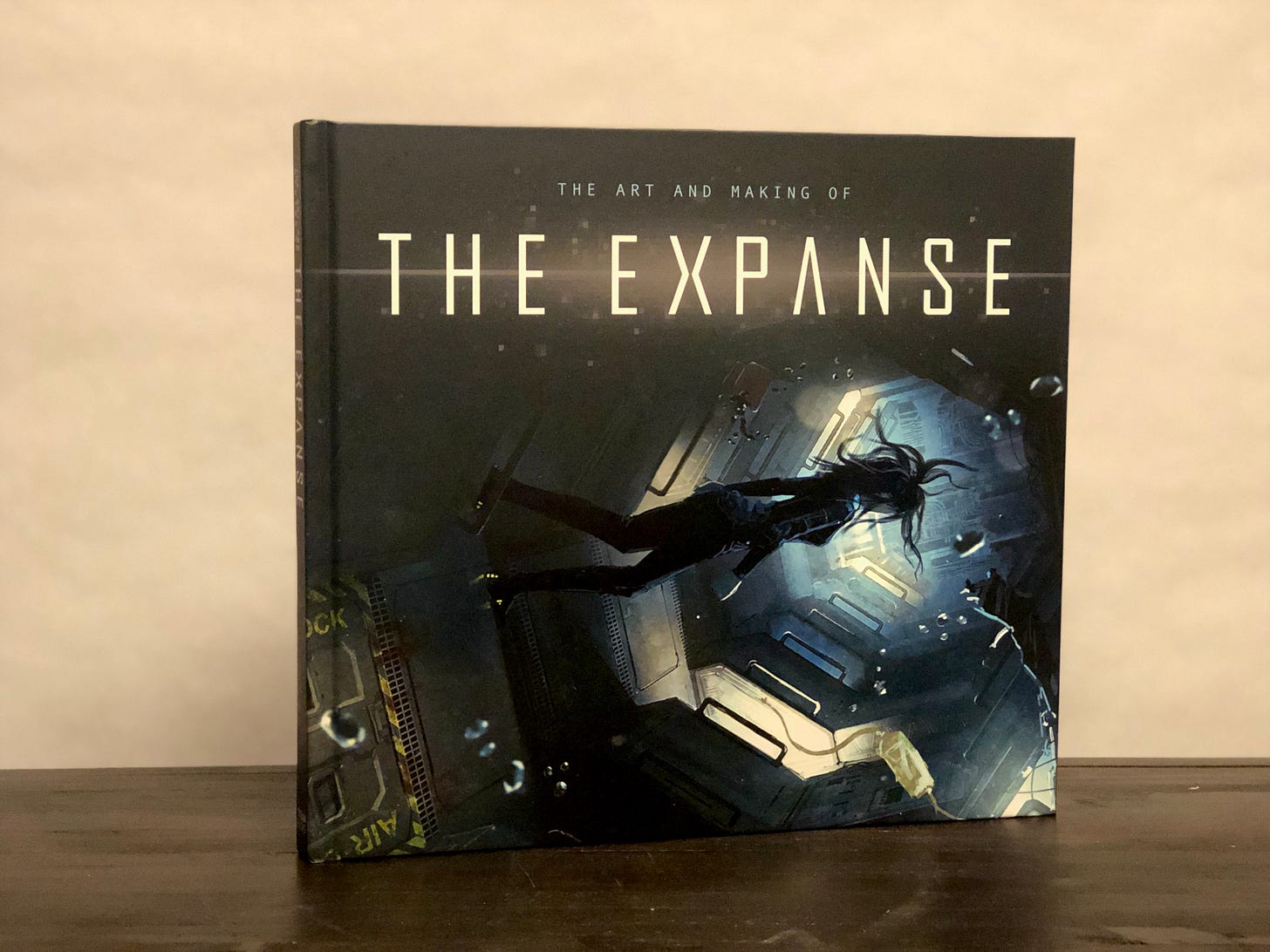
Regular readers know that I’m a big fan of The Expanse, and I’ve covered the books and TV show quite a bit over the years. Ever since the series premiered on Syfy (and soon, Amazon), I’ve really been wanting a nice book of concept art. Titan Books just published one, and flipping through it, it’s utterly gorgeous. It’s loaded with illustrations and publicity photos, but is also serves as a nice guide to the series — there are sections on the characters, ships, weapons and more.
DHPFX’s X-Wing Pilot Helmet — $175

I talk a lot about Cosplay, and one of the projects that I embarked on earlier this summer was my X-Wing pilot build (which I’ll have to write up one of these days). I suited up as General Merrick from Rogue One, and painted up my helmet accordingly. The helmet is from prop shop DHPFX, and if you’ve never put together a costume before, it’s a nice, introductory project. It requires a handful of tools, but it took me only a couple of days to get it completely finished up. It’s a good weekend project! (FYI: This picture is the finished version that I picked up this year, but you can buy one that is fully assembled / painted, but it’s more expensive.)
The Folio Society’s edition of A Game of Thrones — $195
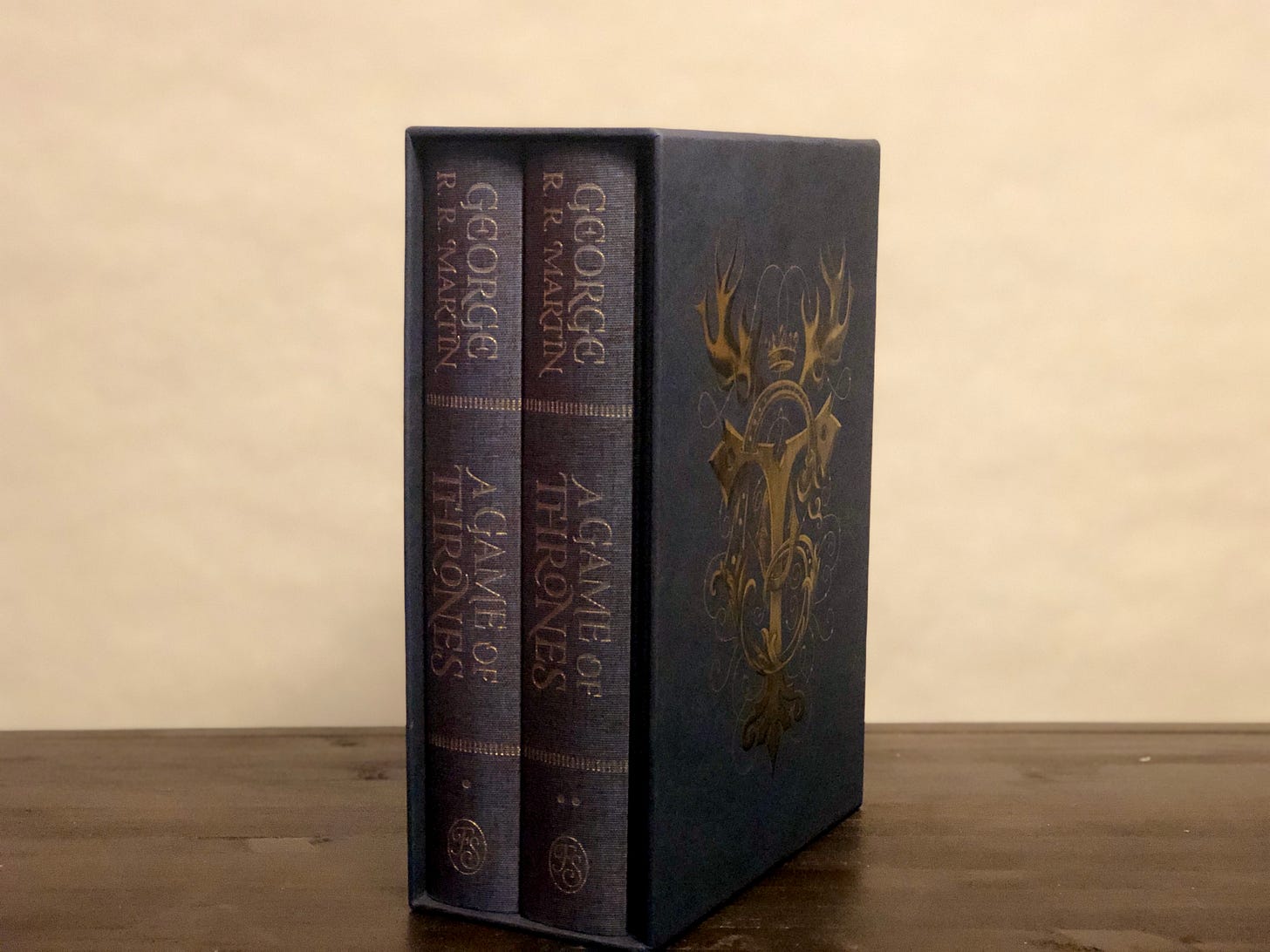
HBO’s Game of Thrones is now over, and fans are going to have to wait for the next installment of the book series. If you like really, really, really pretty books, The Folio Society’s edition of A Game of Thrones is a beautiful one. It’s got some gorgeous interior artwork and a map of Westeros, and while the price is a bit steep, it looks fantastic on the shelf.
Future Tense Fiction: Stories of Tomorrow — $27
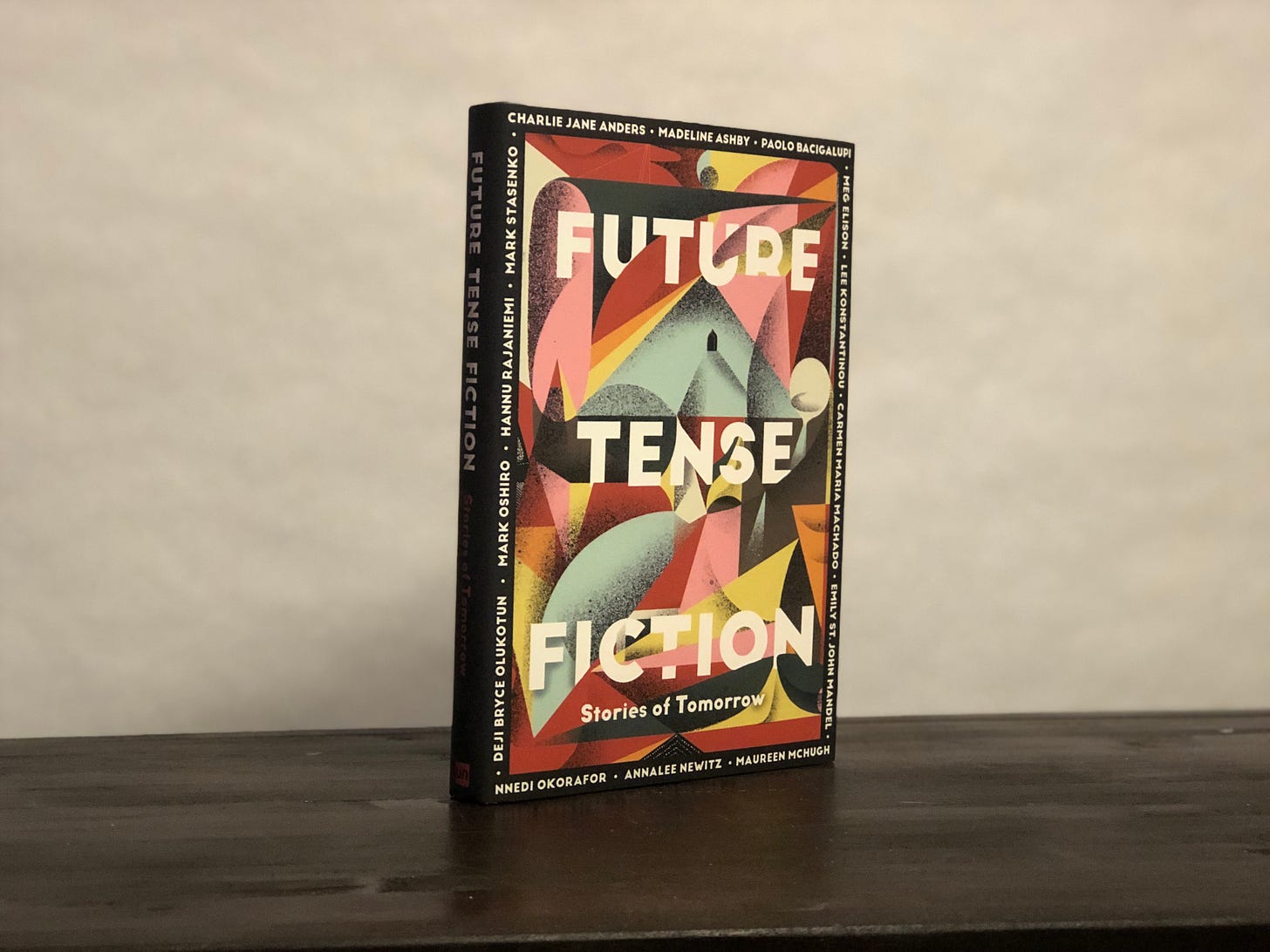
The Atlantic Council, Slate Magazine, and Arizona State University have been working for a couple of years on their Future Tense project — a series of short science fiction stories published through Slate. The stories are fantastic, and this year, they’ve published an anthology of the project’s best short stories, including ones from Charlie Jane Anders, Paolo Bacigalupi, Annalee Newitz, Nnedi Okorafor, and others.
The Legend of Zelda: Link’s Awakening — $60
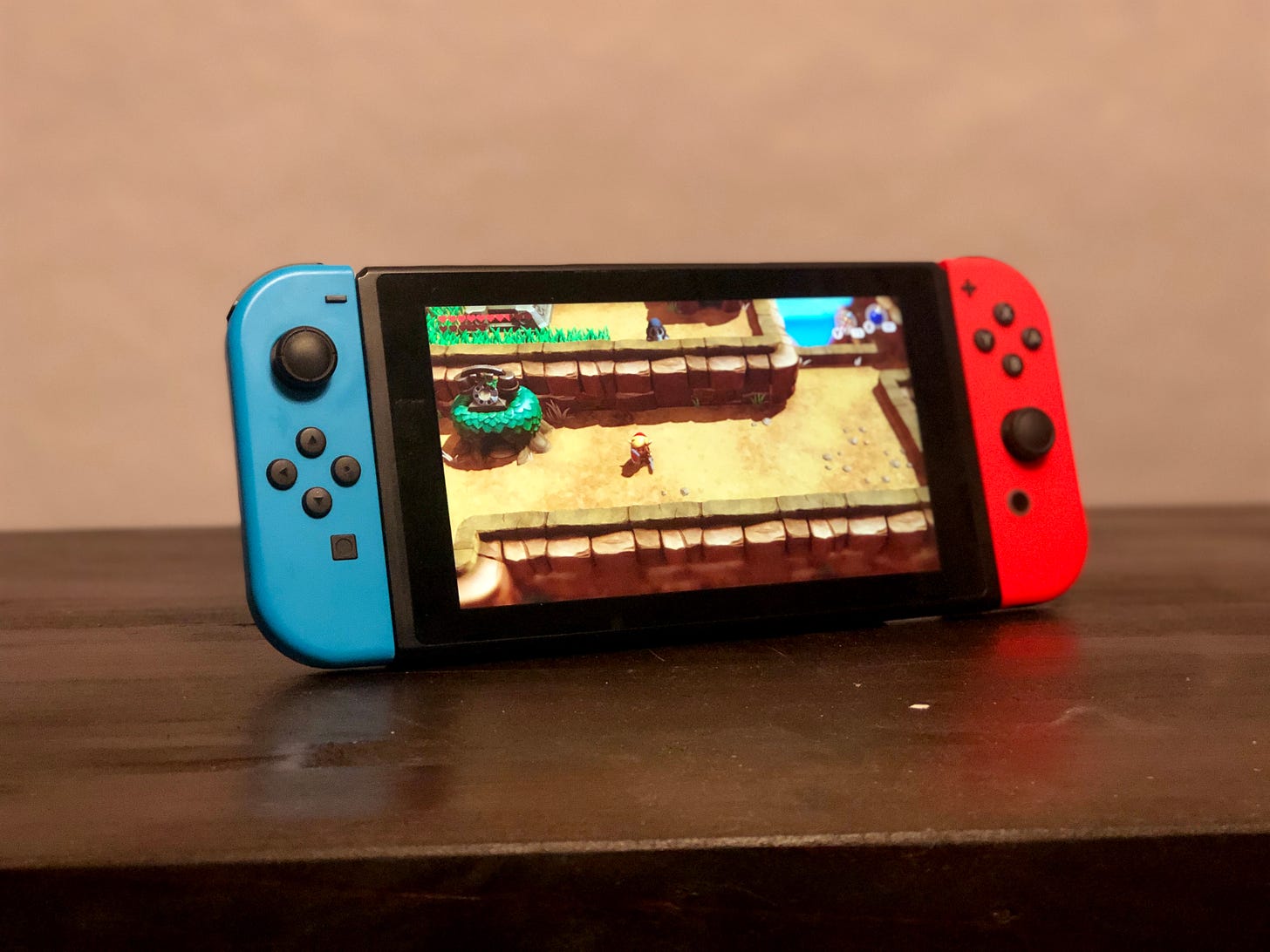
The first video game that I really played was Link’s Awakening. Nintendo remade the game for the Nintendo Switch this year, and it’s a beautiful remake of a really fantastic story.
LEGO Creator NASA Apollo 11 Lunar Lander — $100

I’m a life-long fan of LEGO, and I’ve always loved their space sets. To coincide with the 50th anniversary of the Apollo 11 mission earlier this year, the company released a special set: the Apollo 11 Lunar Lander. It’s a spectacular, well-detailed set, and it makes for a nice display piece. (or a really cool toy for the space-obsessed kid in your life.)
The Moon: A History of the Future, by Oliver Morton — $28
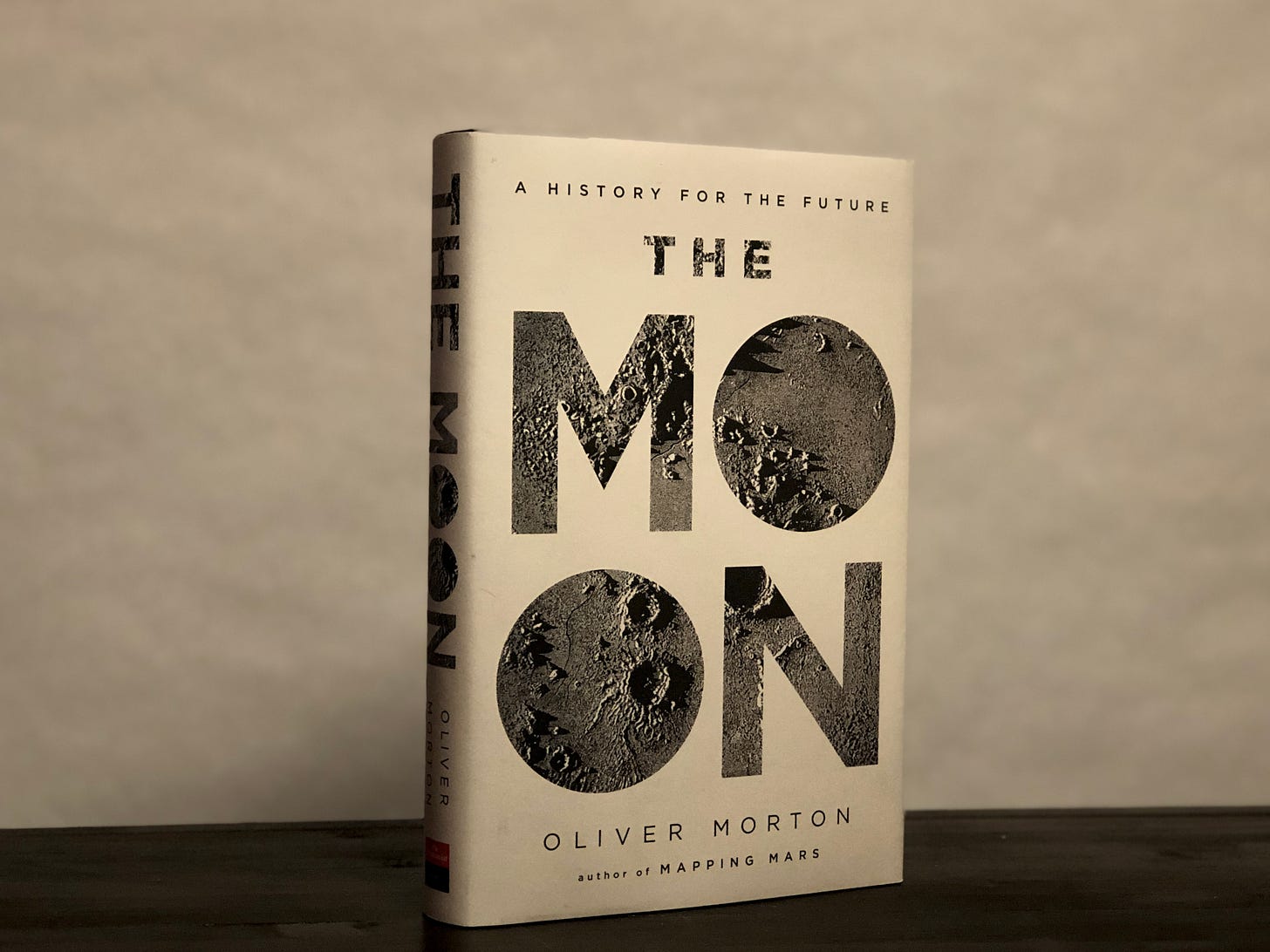
This year’s Apollo anniversary meant that there were a number of Apollo-related books hitting store shelves this summer. Out of their numbers was Oliver Morton’s fantastic The Moon: A History of the Future. Less a history of the Apollo mission, it’s a dynamic portrait of the Moon itself, how we as a species have related to it over the years, and what going back might mean.
Savage Industries EDC ONE Bag — $225

I picked up this bag earlier this year after I realized I needed to put together some sort of basic writer’s kit: something I can run out of the house with and have everything I need: spare book, notebooks, pens, charging cords, iPad, etc. I tried out a handful of bags, but ultimately settled on one designed by Adam Savage, the EDC One. It’s extremely practical, holds everything I could ever want while out and about, and it’s nicely durable.
Ten Thousand Doors of January by Alix E. Harrow — $27
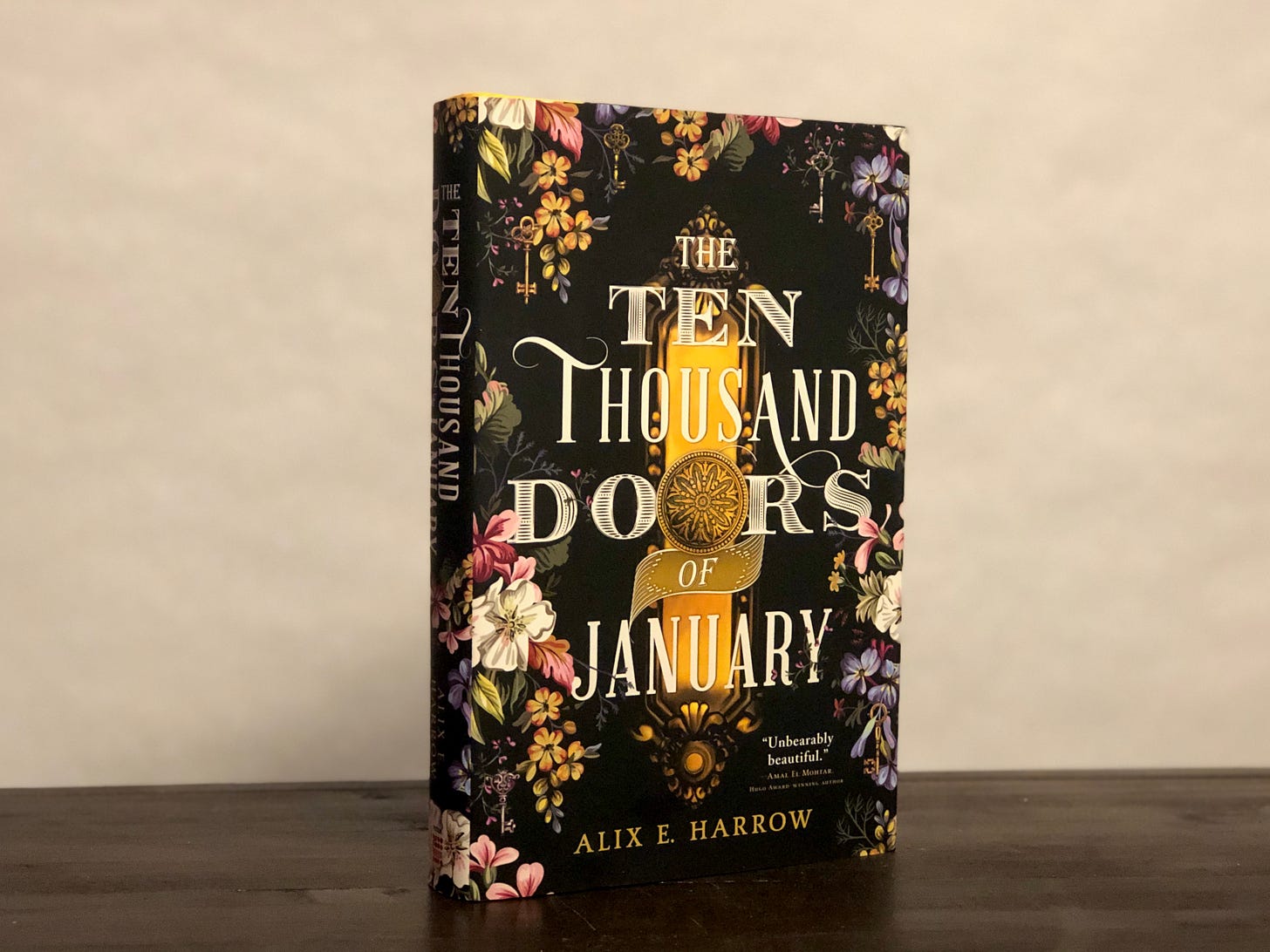
Alix E. Harrow’s book is one that absolutely blew me away when I read it earlier this fall: a wonderful portal / multiverse fantasy about a young woman fighting to try and find her identity, wrapped up in a powerful story of multiculturalism and personal growth. It’s easily my favorite book of 2019.
These Truths: A History of the United States, by Jill Lepore — $20
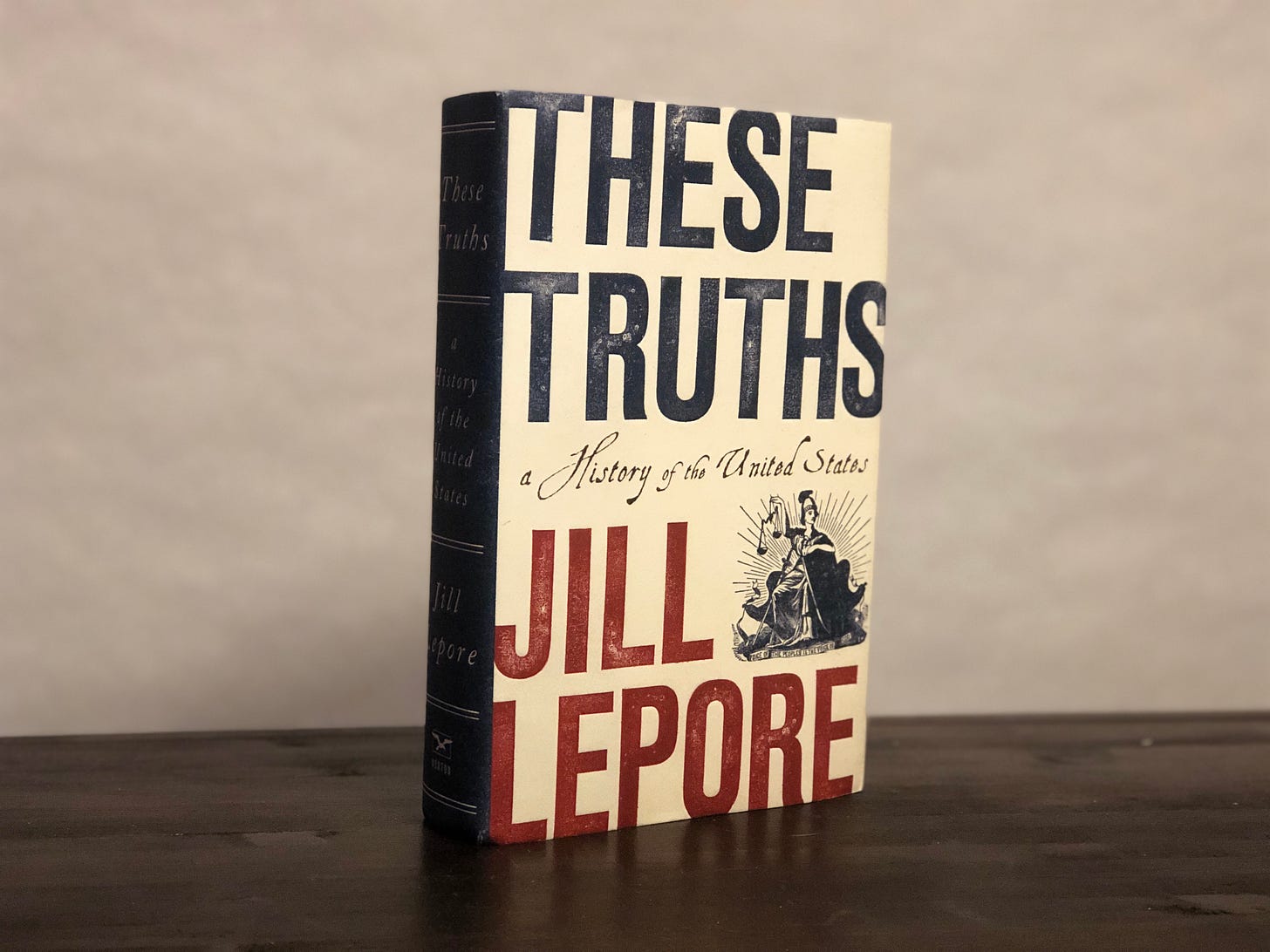
I recently finished this sprawling history of the United States. It’s a powerful, interesting take on the nation’s history, one that casts our commonly-held origin story of a desire for a free nation against the cold, hard truth of reality: that freedom was only reserved for a segment of the population. I’ve been wanting to read more books about the history and character of the country, and this is a good one to start with: a thoughtful, uncomfortable history that examines the racial, economic, and cultural tensions that came with the founding of the country. This is a good one to pick up prior to the 2020 election.
Tru Red Quick Dry Gel Pens — $8

Know a writer? There are people who go all out for fountain pens, but for every day writing, I’ve bounced around between pen brands. My default want with a pen is for it to work, every time. They need to have a solid color, and be comfortable. These fit the bill nicely. They’re reliable, comfortable, and don’t smear.
War Stories: New Military Science Fiction, by Jaym Gates and Andrew Liptak
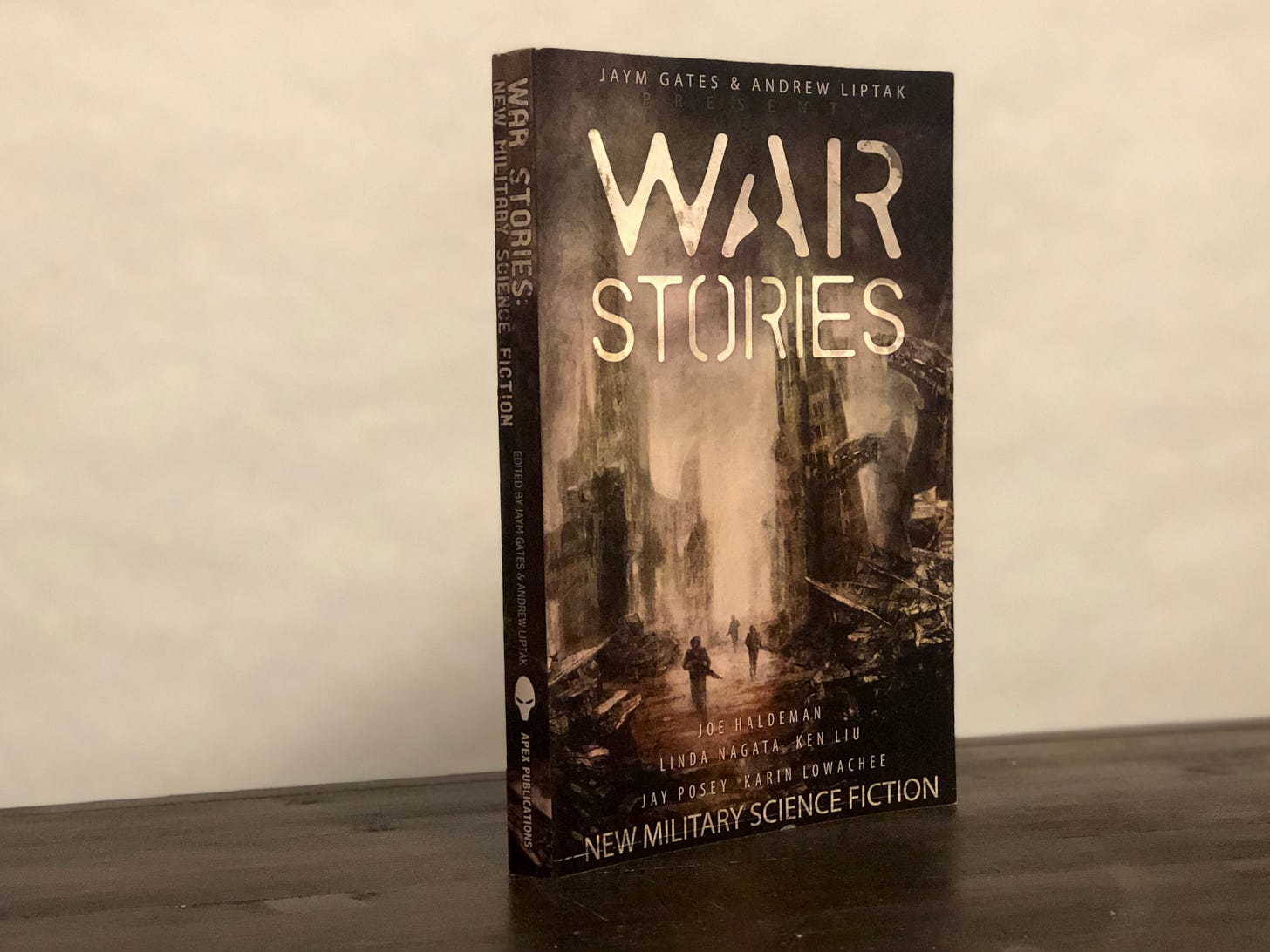
Hey, I know that guy! This is as close as I’m getting to sponsored content for this blog: it’s the book that Jaym Gates and I co-edited. It’s a fantastic anthology (I’m biased, I know), with stories from authors like Ken Liu, Linda Nagata, Karin Lowachee, and others, all about the nearish-future of warfare. Even though it was published back in… god, 2014, it still holds up nicely.
Reading List
- Allen M. Steele’s 30th Anniversary. Allen M. Steele has published some of my favorite science fiction stories (Coyote, Arkwright, etc), and he recently published a nice post about looking back on 30 years of publishing.
- Arthur Machen. The Paris Review has an intriguing post about two pioneering SF figures, Arthur Machen and H.G. Wells, and examines a point at which they met, then diverged in their respective careers.
- The rise of Boba Fett. The Mandalorian is now well into its run on Disney+, and The Ringer has a new take on the appeal of another famous Mandalorian, Boba Fett. There’s not a ton that hasn’t been covered before, but it’s a good overview:
Between the action figures and video games, the aura of Boba Fett and the fervor of the online cult fandom he’s attracted begins and ends with his iconic look.
- Cosplaying Rey. Wired’s Angela Watercutter has a wonderful piece up called “Everybody Loves Rey, A Star Wars Story,” looking at the character’s impact on cosplayers, and how she helped usher in a whole new group of women who might not have otherwise dressed up as a Star Wars character. She makes a couple of really interesting points here:
“Looking at the cosplay community of Star Wars initially, it always seemed really scary,” [Caitlin Beards] says. “Everybody was so gung-ho about being as screen-accurate as possible.”
It’s not hard to imagine what group she’s talking about: the 501st and Rebel Legions. This is an interesting point, and not the first time that I’ve seen it raised. The 501st certainly has a high bar for entry, and I’ve seen a lot of recruits get discouraged and drift away. The complicated costumes, like Stormtroopers, represent a huge technical barrier to entry.
The costume itself is reasonably simple to fashion, which makes it easier for people to dress up. Another point that Beard makes is: “Myself and too many of my female friends have had bad run-ins with people. But I feel like now cosplayers are quicker to say, ‘Back off!’. If a guy gets too up close and personal when you're Rey, you have a lightsaber, so you can put a nice 32-inch distance between you and the guy real fast.”
- Dungeons & Dragons Resurgence. Ethan Gilsdorf has an interesting piece in The New York Times about the upswing that Dungeons & Dragons has experienced in the last couple of years. The piece looks into why that’s happening: a new edition that Wizards of the Coast launched a couple of years ago, as well as new applications in a bunch of places, as well as high-profile placements in things like Stranger Things. But what caught my eye was the effort that the company placed in making sure that it was an inclusive game:
Crawford, who is gay, also wanted the new rules to reflect the racial, ethnic, gender and sexual diversity of its players. No more cisgender damsels in distress, scantily clad in chain mail bikinis. Your adventuring party might contain a lesbian elf wizard, a brown-skinned dwarf fighter and a nonbinary half-orc rogue.
- The Return of John F. Ford. Writing in Slate, Isaac Butler has a really fascinating piece about the career of John M. Ford, an influential fantasy and science fiction writer that has largely disappeared from the public consciousness, in part because he fell out of print. It’s quite a story, and has a happy ending: Tor Books will be republishing Ford’s large body of work, starting in 2020.
Currently Reading

The to-read list is as long as it ever is. On top right now: Myke Cole’s The Killing Light, the final installment of his Sacred Throne trilogy (Started with The Armored Saint / The Queen of Crows). It’s really good so far, and I’m looking forward to seeing how he ties off the series.
I’ve also been listening to Madeleine Roux’s Savaged, which is pretty interesting, although a little close to The Expanse. I’m waiting to see how it turns out, but it’s a pretty engaging read. I’ve been alternating that with Tamsyn Muir’s Gideon the Ninth, which is also quite a bit of fun.
Also on the list is Daniel H. Wilson’s The Andromeda Evolution, a sequel to Michael Crichton’s The Andromeda Strain, Supernova Era by Cixin Liu (translated by Joel Martinsen), and Bob Iger’s memoir / business book The Ride of a Lifetime.
On my short list is William Gibson’s The Peripheral, which people have recommended to me over the years. Amazon is making a series out of it, which seems as good a time as any to finally pick it up off the shelf and read it as I’ve been meaning to. I also really got a copy of Hao Jingfang’s Vagabonds, which I’ve really been looking forward to. It’ll likely be on my “most anticipated SF/F of 2020” list, wherever that ends up appearing.
That’s all for now. As always, thank you for reading: I appreciate the comments and e-mails that I’ve gotten from recent issues. As I noted before, let me know if you have thoughts on the best books of 2019 and the last decade — I’m starting to assemble my lists for those. And if you like what you’ve read, please consider forwarding it along to others who might be interested, or telling your friends / followers on social media.
Have a happy Thanksgiving!
Andrew